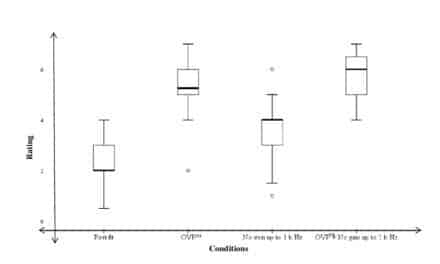According to a new study led by researchers from the University of Southampton in the United Kingdom, for the many children who suffer from “glue ear” or otitis media with effusion, a simple procedure with a nasal balloon can reduce the impact of hearing loss and help avoid the overuse of antibiotics.
As outlined in a study article published in the Canadian Medical Association Journal (CMAJ), it is common for young children to develop otitis media with effusion (OME), also whereby the middle ear fills with thick fluid that can affect hearing. The authors say that OME often has no symptoms, and parents may seek medical help only when hearing difficulties occur.
“Unfortunately, all available medical treatments for otitis media with effusion such as antibiotics, antihistamines, decongestants and intranasal steroids are ineffective and have unwanted effects, and therefore cannot be recommended,” said co-author Ian Williamson, MD from Primary Care and Population Sciences at the University of Southampton.
In 2004 in the United States, there were 2.2 million diagnosed episodes of otitis media with effusion, costing an estimated $4 billion. Approximately 200,000 children per year in the UK either consult with primary care practitioners or community clinics for OME treatment. There is a four in five chance a child will get an ear effusion in the first 10 years of life.
The researchers from University of Southampton undertook an open randomized controlled clinical trial to determine if auto-inflation with a nasal balloon could be used on a large scale to benefit children in primary care settings. To use a nasal balloon, the child blows through each nostril into a nozzle to inflate the balloon and help clear the ears. The effectiveness of this procedure has been shown only in small trials in hospitals.
This latest trial reportedly involved 320 children aged 4 to 11 years from 43 family practices in the UK who had recent histories of OME with confirmed fluid in one or both ears. The children were randomly assigned to either a control group that received standard care or a group that received standard care with auto-inflation three times a day for one to three months. The children receiving auto-inflation were more likely than those in the control group to have normal middle-ear pressure at both one month (47.3% and 35.6%, respectively) and three months (49.6% and 38.3%, respectively) and have fewer days with symptoms.
“Autoinflation is a simple, low-cost procedure that can be taught to young children in a primary care setting with a reasonable expectation of compliance,” said Dr Williamson. “We have found use of auto-inflation in young, school-aged children with otitis media with effusion to be feasible, safe and effective in clearing effusions, and in improving important ear symptoms, concerns, and related quality of life over a three-month watch-and-wait period.”
The authors suggest that this treatment should be used more widely in children over the age of four to manage OME and help treat the associated hearing loss.
In a related commentary, Drs Chris Del Mar and Tammy Hoffman from the Centre for Research in Evidence-Based Practice at Bond University in Queensland, Australia, stated that at last “…there is something effective to offer children with glue ear other than surgery. Surgery to insert drainage tubes can help a select minority of children. Auto-inflation is one of a number of effective non-drug interventions typically underrepresented in research and clinical practice.”
The authors note that there are barriers to using non-drug therapies widely in clinical practice. In the case of auto-inflation, doctors need to know about the technique’s effectiveness and how it is done, and they must be able to instruct patients and families in how to use it.
According to the University of Southampton announcement, the Royal Australian College of General Practitioners recently launched the free Handbook of Non-Drug Interventions (HANDI) and will soon include auto-inflation as a treatment for otitis media with effusion.
Source: Newswise; University of Southampton
Photo credit: CMAJ; University of Southampton






Otitis media is the most frequently identified hearing impediment in both infants and younger children. Approximately 75% have experienced otitis media at least once before they turn three-years-old.